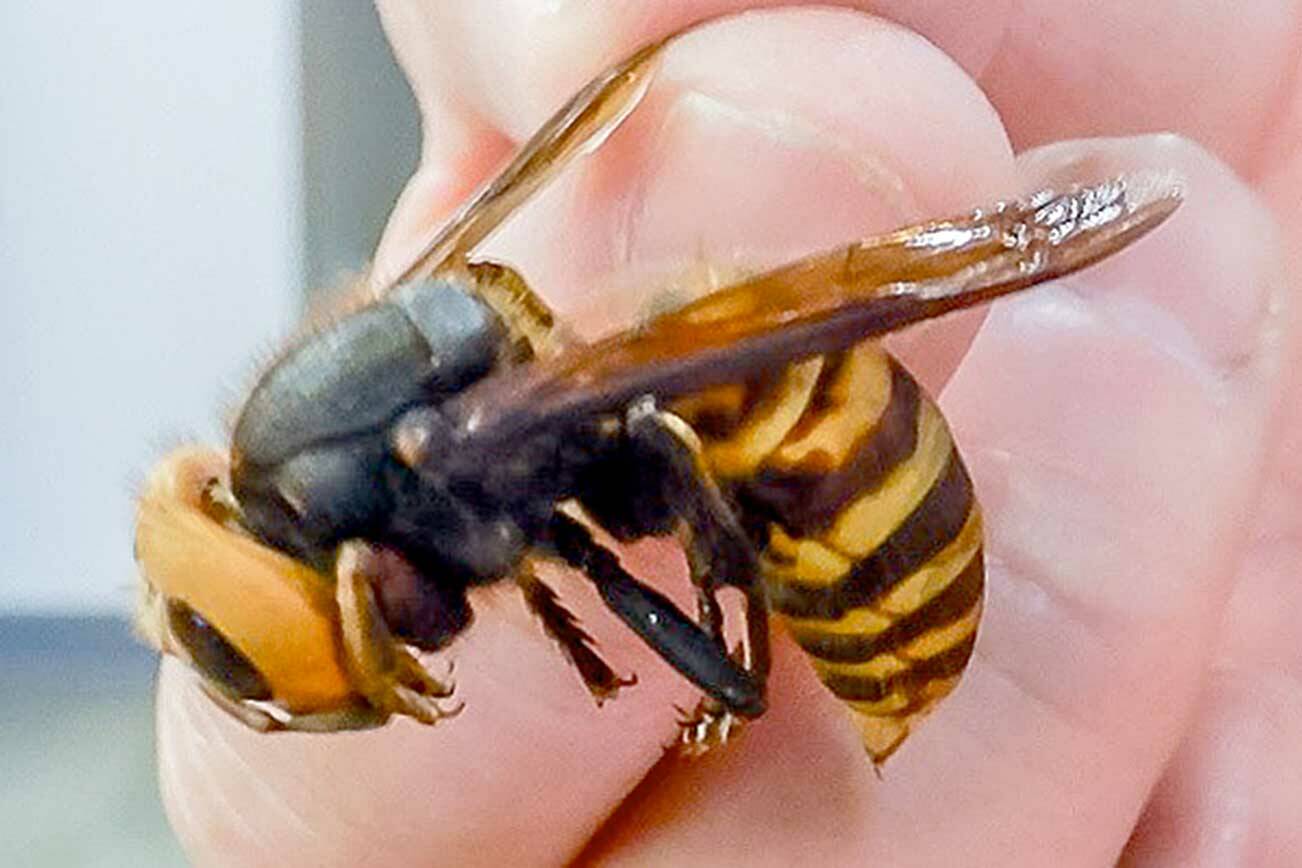Murder hornets are getting a new name: the northern giant hornet.
While the invasive species, which has been spotted in Washington State and B.C., is known to researchers as Vespa mandarinia, the Entomological Society of America announced the name change on July 25 after proposals by entomologist Chis Looney.
Originating from Asia, northern giant hornets were first spotted on the West Coast for the first time in 2019 and scientists and organizations have been trying to eradicate it since, primarily because of its threat to native bees, explained executive director of the Invasive Species Council of B.C., Gail Wallin.
Naming a species based on where it comes from is a common protocol, Wallin said, however, this is changing to avoid possible racial implications based on geographical location. The northern giant hornet was previously known as the Asian giant hornet because it originated in Asia.
There’s a common naming project through the ESA to rename insects and other species that were previously named to ensure names don’t implicate racial ideas or denote a group of people, making the new names more considerate, Wallin said.
“It’s a great name change. We’re pleased to see the shift to what’s called common names that are much more acceptable.”
Murder hornet references should be avoided because it causes undue fear about the species, even in regions far removed from where Vespa mandarinia has appeared in North America,” said ESA president Jessica Ware.
READ MORE: US scientists will set 1,000 traps for murder hornets this year
Ware said this hornet is distiguishable based on it’s large size and yellowish-orange and black coloring.
“Depending on the stings they can be a health danger to people, but I think it’s a misnomer hence we don’t use it, it grabs attention for sure, it’s not a term that we’re comfortable with,” Wallin said, speculating the hornet’s impact on the honeybee population may have provided them with that name.
Other name changes under the same category are the gypsy moth, now named the spongy moth and the Japanese beetle, originating from Japan, which is still in the process of having its name changed.
Renaming is done on a scientific basis, making it hard to say when a name will be officially changed, Wallin said. The first step is identifying naming issues that could be linked to a group of people and then finding a common name that makes sense.
With the invasive northern giant hornet spotted at the border in Washington, the Invasive Species Council B.C. is prepared to track any hornets which may linger in B.C. areas.
“We work behind the scenes with technical experts on identifying it,” said Wallin. “Not just for the Northern giant hornet but many people report what they think might be an invasive species and it might be a local native species.”
Reporting invasive species and sharing photos to the provincial government and non-profits like the Invasive Species Council B.C. allows a proactive rapid response from scientists.
“[The northern giant hornet] happens to be big, it happens to eat a lot, it happens to eat a large range of insects and can certainly attack honeybee hives,” Wallin said. “When you look at introducing anything, whether it’s a northern giant hornet or a goldfish, what you’re doing is you’re taking that insect putting it into an environment it is not native to and it does not come with predators that keep it in check.”
Wallin emphasized honeybees in B.C. haven’t developed mechanisms to be able to ward off an attack from the northern giant hornet, which will be eating food and insects that are part of the natural diet for native species.
“When you bring something in you actually upset the apple cart, you actually disturb the very important balance that’s out there,” she said.
Ware explained if you think you spot a northern giant hornet, reporting it with date, time and location to invasive monitoring organizations and not interacting with it is ideal to surveil the environment.
On a hike, walk, or car ride if something looks out of place in the environment or there is a suspected northern giant hornet, the Invasive Species Council B.C urges people to take a photo and send it to info@bcinvasives.ca.

